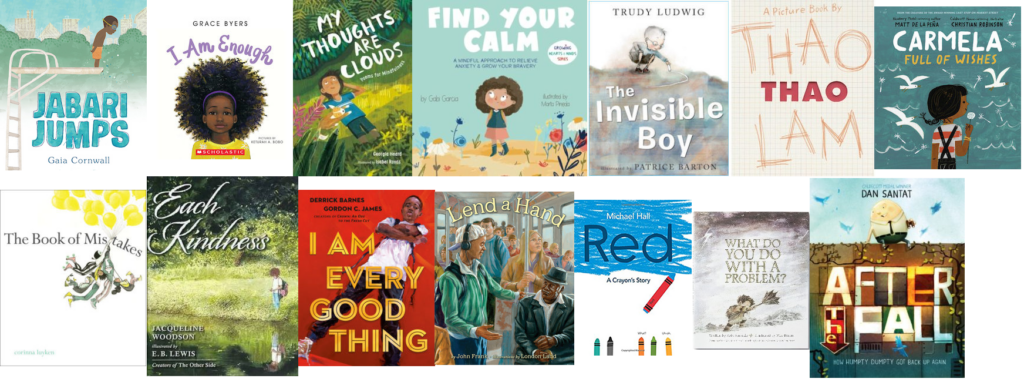This post by NCTE member Kasey Short is reprinted with permission from MiddleWeb.
Students are never too old to enjoy hearing books read aloud or to benefit from the impact of their content. Middle school students need consistent opportunities to learn about, practice, and discuss social emotional skills. These skills aid students in their behavioral and academic growth.
Throughout the years I have found picture books to be an effective way to encourage students to think about and discuss these topics. Starting out by discussing the characters in these accessible, illustrated stories allows middle grades students to offer their ideas about children’s literature without having to share personal information until they are ready.
Using picture books also allows me to address various topics in advisory over a short period of time because most picture books are quick to read and easy for students to understand.
In the list below, I offer an overview and suggested list of questions. The questions ask students to share personal information and thoughts. Many will need time to develop trust before they feel comfortable sharing, while others may choose to share from the beginning of the year. Some may never feel comfortable. This should always be their choice.
Jabari Jumps by Gaia Cornwall
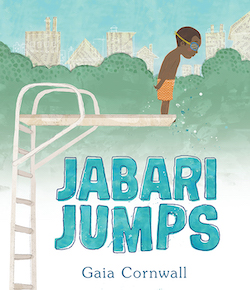 Overview: Jabari begins the day looking forward to jumping off the diving board for the first time but realizes he might feel a little scared and uncertain about jumping. His dad lets him know that it is okay to feel scared and that sometimes when dad feels scared, he takes a deep breath, and it feels less scary and more like a surprise. Jabari climbs back to the top of the diving board, thinks about how he likes surprises, and jumps.
Overview: Jabari begins the day looking forward to jumping off the diving board for the first time but realizes he might feel a little scared and uncertain about jumping. His dad lets him know that it is okay to feel scared and that sometimes when dad feels scared, he takes a deep breath, and it feels less scary and more like a surprise. Jabari climbs back to the top of the diving board, thinks about how he likes surprises, and jumps.
Suggested Questions:
1. How did Jabari overcome his fear of jumping off the diving board?
2. How did Jabari’s feelings about jumping off the diving board change throughout the book?
3. Have you ever tried something that scared you? What did it feel like before and after the experience?
4. What helps you when you are scared?
5. Do you like surprises? How do you think new experiences are like surprises?
6. How did reframing the experience as a surprise help Jabari?
7. If you could overcome one fear, what would it be?
I Am Enough by Grace Byers
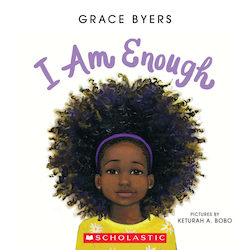 Overview: This book reads like a lyrical poem and shows a young girl giving herself affirmations. Throughout the book the reader is given concrete and abstract examples of affirmations that encourage loving who you are and being kind to others. The book ends with the empowering quote, “I am enough.”
Overview: This book reads like a lyrical poem and shows a young girl giving herself affirmations. Throughout the book the reader is given concrete and abstract examples of affirmations that encourage loving who you are and being kind to others. The book ends with the empowering quote, “I am enough.”
Questions:
1. How did the book make you feel?
2. What do you think the main character in the book thinks about herself?
3.What does the following quote mean to you? “I’m not meant to be like you; you’re not meant to be like me. Sometimes we will get along, and sometimes we will disagree.”4.The last page of the book simply says, “I am Enough.” What does it mean to be enough? What causes someone to feel like they are enough and other people to feel like they are not?
5. Think about who you are and write an affirmation sentence about yourself.
Activity Suggestions:
Create an advisory “We are Enough” poem. Start and end the poem with the line “We are enough” and have each member of the advisory write one sentence about themselves in the same style as the book to contribute to the group poem. (Students can also create their own personal poems.)
My Thoughts Are Clouds: Poems for Mindfulness by Georgia Heard
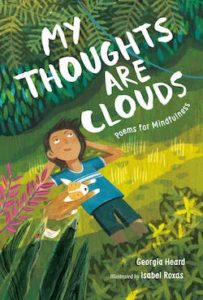 Overview: This book starts with an introduction about mindfulness and why it is important. The book then has a collection of poems written about mindfulness in a variety of styles. Some of the poems read like breathing exercises. While the poems can be read out of order, they seem to follow from one poem to the next, and if possible, it would be beneficial to read them in order from cover to cover.
Overview: This book starts with an introduction about mindfulness and why it is important. The book then has a collection of poems written about mindfulness in a variety of styles. Some of the poems read like breathing exercises. While the poems can be read out of order, they seem to follow from one poem to the next, and if possible, it would be beneficial to read them in order from cover to cover.
Questions:
1. Which is your favorite poem from the book? Why?
2. What did you learn about mindfulness from the poems?
3. The poem “In and Out Breath” on page 22 gives examples of what the author hopes to breathe in and out. What do you hope to breathe in and out?
4. The poem “My Thoughts are Clouds” on page 28 gives examples of thoughts someone may think when they are nervous and/or anxious. What are some thoughts that pop into your mind?
5. Read about kindfulness on page 50. How can you practice kindfulness? How might practicing kindfulness impact others?
Activity Suggestions:
1. Choose any of the breathing techniques in the book and try them.
2. Read the poem “Selfie Moment” on page 26. Capture the present moment in your mind. Sketch a picture of a moment you hope to hold in your memory forever.
3. Read “Consider a Raisin” on page 36. Then give students a few different types of food to try and ask them to eat slowly and consider each morsel of food and how it tastes – like the author of the poem does.
4. Read the poem “Nature Walk” on page 40 and then go on a mindful walk with your advisory.
5. Complete the Butterfly Body Scan activity on page 44.
6. Read the poem “Empowerment Mantra” on page 48 and then have each student write their own empowerment mantra on a sticky note and put it somewhere they will see it.
7. Read the poem “Kindfulness” on page 54 that includes a poem by Christina Rossetti and a similar poem the author wrote. Use these as examples to write you own poem about being kindful.
Find Your Calm by Gabi Garcia
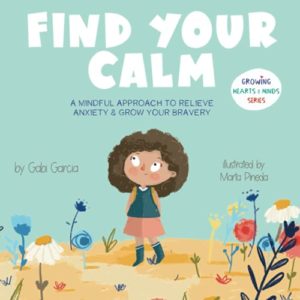 Questions:
Questions:
1. The main character in the book describes anxiety in many different ways such as: “a jumble of thoughts racing through my head,” “my body feels like it’s moving in every direction,” “I freeze,” etc. What does anxiety feel like to you?
2. The character lists various strategies to help her feel calm such as the ones below. Have you ever tried any of these strategies? Which one do you think might help you the most?
• looking around for reminders of safety
• focusing on something familiar
• paying attention to her 5 senses
• paying attention to her breath
3. How does using specific strategies and having others she can trust impact her day-to-day life?
Activity Suggestions:
The last 4 pages of the book provide specific grounding activities and information about anxiety. Share these activities with students and take time to practice them together.
The Invisible Boy by Trudy Ludwig
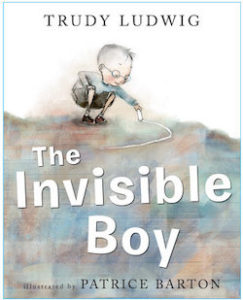 Overview: Brian isn’t noticed by his teacher or his peers. He goes through most school days unnoticed. He loves to draw and spends his free time at school drawing creative scenes. When a new student, Justin, joins their class, the students laugh at him because he is different. Then Brian and Justin become friends.
Overview: Brian isn’t noticed by his teacher or his peers. He goes through most school days unnoticed. He loves to draw and spends his free time at school drawing creative scenes. When a new student, Justin, joins their class, the students laugh at him because he is different. Then Brian and Justin become friends.
The author’s website has links to activities and questions connected to the book.
Thao by Thao Lam
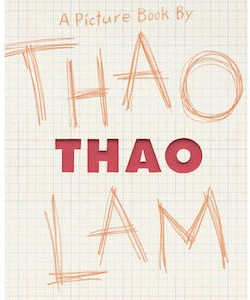 Overview: Thao shares her own experiences of growing up with a name that most people mispronounced and misspelled. She shares how it felt to temporarily change her name to something easier to pronounce. Her experience shows the importance of taking the time to learn to pronounce names correctly along with the power of loving your name, and encourages the reader to think about the significance of a name.
Overview: Thao shares her own experiences of growing up with a name that most people mispronounced and misspelled. She shares how it felt to temporarily change her name to something easier to pronounce. Her experience shows the importance of taking the time to learn to pronounce names correctly along with the power of loving your name, and encourages the reader to think about the significance of a name.
Topics: Identity
Questions:
1. How do Thao’s feelings about her name change throughout the book?
2. Why does she decide to ask people to call her Jennifer? How do you think she feels after making that decision?
3. What do you know about your name? Does your name have a story, significance, etc.?
4. Has anyone ever mispronounced or misspelled your name? How did it make you feel?
5. Why is it important to take time to learn how to correctly say people’s names?
6. If you don’t know how to say someone’s name, what can you do to help you learn?
Carmela Full of Wishes by Matt de la Peña
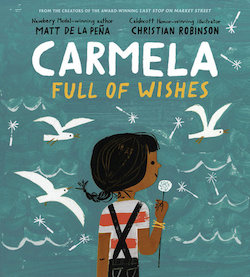 Overview: It is Carmela’s birthday and her wish of being old enough to go to town with her brother has come true. She picks a dandelion, and she starts to think about the perfect wish. As they travel, she notices different aspects of her town and imagines different things that she dreams for her and her family. Then she falls on her scooter and drops the flower. She begins to cry because she has lost her wish. Her brother then surprises her and takes her to a place where “the sky was full of wishes.”
Overview: It is Carmela’s birthday and her wish of being old enough to go to town with her brother has come true. She picks a dandelion, and she starts to think about the perfect wish. As they travel, she notices different aspects of her town and imagines different things that she dreams for her and her family. Then she falls on her scooter and drops the flower. She begins to cry because she has lost her wish. Her brother then surprises her and takes her to a place where “the sky was full of wishes.”
Find a teacher guide from the publisher here.
The Book of Mistakes by Corinna Luyken
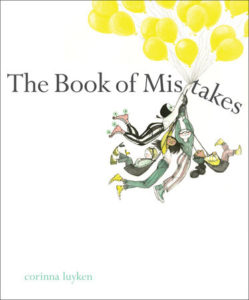 Overview: The images and words come together to tell the story of how one little mistake on a painting inspires good ideas and more mistakes lead to a masterpiece. It shows readers the value of making mistakes and how it can lead to new ideas and discoveries.
Overview: The images and words come together to tell the story of how one little mistake on a painting inspires good ideas and more mistakes lead to a masterpiece. It shows readers the value of making mistakes and how it can lead to new ideas and discoveries.
The publisher’s teacher guide includes specific SEL questions and activities.
Each Kindness by Jacqueline Woodson
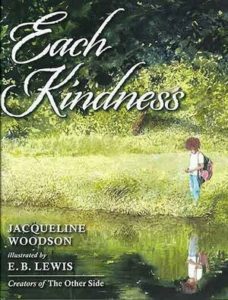 Overview: The book tells the story of Chloe who ignores Maya, a new student in her class, even when Maya reaches out and tries to have conversations and play with her. Chloe laughs with her friends about Maya’s clothes and what she brings for lunch. But she begins to realize the value of kindness after her teacher demonstrates how kindness has a ripple effect with a bowl of water and pebbles. Then one day Maya moves to a new school, and Chloe realizes she’s lost her opportunity to ever be kind to Maya.
Overview: The book tells the story of Chloe who ignores Maya, a new student in her class, even when Maya reaches out and tries to have conversations and play with her. Chloe laughs with her friends about Maya’s clothes and what she brings for lunch. But she begins to realize the value of kindness after her teacher demonstrates how kindness has a ripple effect with a bowl of water and pebbles. Then one day Maya moves to a new school, and Chloe realizes she’s lost her opportunity to ever be kind to Maya.
Questions:
1. Why do you think Chloe decided to treat Maya the way she did?
2. How do you think Maya felt when she was rejected by the students at her new school?
3. What could Chloe have done to show Maya kindness?
4. What does the quote “Each kindness makes the whole world a little bit better” mean to you? How could you apply it to how you treat others?
5. How do you think Chloe felt at the end of the story? How do you think her experience with Maya will impact how she treats others from then on?
6. How have other people shown you kindness? How have you shown others kindness?
7. What can you do this week to be kind to others?
I Am Every Good Thing by Derrick Barnes
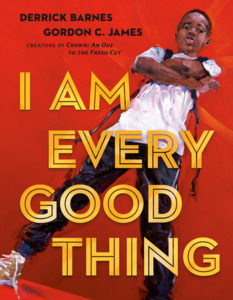 Overview: This book highlights all the amazing things about a young boy. Some are concrete examples, and others are more abstract and encourage the reader to interpret the meaning. It leaves the reader with positive feelings and many examples of how someone might be “good.”
Overview: This book highlights all the amazing things about a young boy. Some are concrete examples, and others are more abstract and encourage the reader to interpret the meaning. It leaves the reader with positive feelings and many examples of how someone might be “good.”
The publisher’s teacher guide with activities and questions is here.
Lend a Hand: Poems About Giving by John Frank
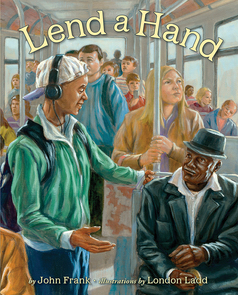 Overview: This book is filled with poems about giving that are accompanied by beautiful illustrations. It includes poems about sharing your lunch with someone who doesn’t have one, donating hair, cleaning up a river, planting trees, and much more. Each of the poems can be read alone and in any order, but there is power in a collective reading about the many ways we can give and help others.
Overview: This book is filled with poems about giving that are accompanied by beautiful illustrations. It includes poems about sharing your lunch with someone who doesn’t have one, donating hair, cleaning up a river, planting trees, and much more. Each of the poems can be read alone and in any order, but there is power in a collective reading about the many ways we can give and help others.
Questions:
1. Which poem did you like the best? Why?
2. What is an example of someone who has given you something important or helped you in a time of need? How did that make you feel?
3. What are examples of giving in poems or in your life that don’t include material possessions? What are different ways you can give to others?
4. Why is it important to give to others?
5. What do you have (think both material possessions and nonmaterial things) that you could give to others?
6. What was given in the poem “Home Run”? How did that gift impact the recipient?
7. What inspired the boy to “give” in the poem “No Change”?
8. How does the illustration beside the poem “Puppy” help you to better understand the poem?
Red: A Crayon’s Story by Michael Hall
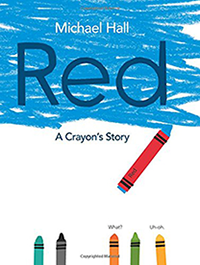 Overview: This thoughtful picture book tells the story of a crayon that is labeled as red but, no matter how hard it tries, always colors blue. The crayon is sad and frustrated as everyone pressures it to be red. Finally, the crayon realizes and accepts that it is a blue crayon; it is then happy, relieved, and excited to be who it was meant to be. This story shows the value of being who you are and accepting others for who they are.
Overview: This thoughtful picture book tells the story of a crayon that is labeled as red but, no matter how hard it tries, always colors blue. The crayon is sad and frustrated as everyone pressures it to be red. Finally, the crayon realizes and accepts that it is a blue crayon; it is then happy, relieved, and excited to be who it was meant to be. This story shows the value of being who you are and accepting others for who they are.
Questions:
1. How did Berry’s friendship help, and what did Berry help others understand about Red?
2. How did other’s expectations of Red impact him?
3. What helped Red to fulfill his potential?
4. What real life examples can you think of where someone is judged based on their appearance?
5. What is the danger of judging others based on their appearance?
6. What makes you, you?
7. Have you ever surprised yourself or others at being good at something you didn’t know you could do until you tried?
Activity Suggestions:
Double Self Portrait – Divide a piece of paper in half. On one side write and/or draw how you see yourself, including strengths, weaknesses, and physical attributes. On the other side draw and/or write how you think others see you including strengths and weaknesses, and physical attributes.
What is the same on both sides? What is different? Why do you think those differences exist?
What Do You Do With a Problem by Kobi Yamada
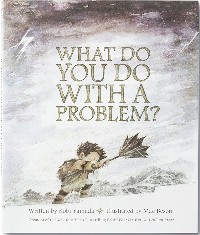 Overview: This beautifully illustrated book tells the story of a child who is struggling with one problem that is causing him great anxiety. Ignoring the problem does not help; in fact, it is not until he finally faces the problem that he finds a solution. This book encourages readers to examine problems closely rather than running away from them – because with problems come opportunities for growth.
Overview: This beautifully illustrated book tells the story of a child who is struggling with one problem that is causing him great anxiety. Ignoring the problem does not help; in fact, it is not until he finally faces the problem that he finds a solution. This book encourages readers to examine problems closely rather than running away from them – because with problems come opportunities for growth.
Questions:
1. The child has a problem that they want to go away. What things did they try that didn’t work? Why do you think they didn’t work?
2. What impact did the problem have on the child at first? How did that change over time?
3. Have you ever had a problem that you couldn’t stop worrying about? How did it feel? What helped you deal with the problem?
4. How did avoiding the problem impact the child?
5. What happened when the child tackled the problem? What did they learn from the problem?
6. Have you ever learned a valuable lesson from a problem?
7. How could you apply the lesson the child learned to your own life?
After the Fall: How Humpty Dumpty Got Back Up Again by Dan Santat
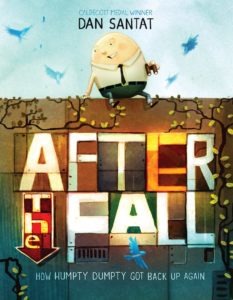 Overview: This engagingly illustrated book tells the story of what happens after Humpty Dumpty’s fall from the wall. Readers learn that he has developed a fear of heights that causes him to miss out on things he loves to do. The ending shows young readers the benefits of getting back up after a literal or figurative fall.
Overview: This engagingly illustrated book tells the story of what happens after Humpty Dumpty’s fall from the wall. Readers learn that he has developed a fear of heights that causes him to miss out on things he loves to do. The ending shows young readers the benefits of getting back up after a literal or figurative fall.
Questions:
1. How did fear impact Humpty?
2. What motivated Humpty to finally climb the wall again?
3. Did the ending surprise you?
4. How does the author use color in the illustrations to show emotion? Consider the colors used to show the bottom of the wall vs the top of the wall.
5. What scares you?
6. What does it feel like when you are afraid?
7. If you could overcome one fear, what would it be?
More Book Suggestions
Mindfulness for Kids in 10 Minutes a Day by Maura Bradley
Jabari Tries by Gaia Cornwall
How to Solve a Problem: The Rise and falls of a Rock Climbing Champion by Ashima Shiraishi
The Year I Learned to Fly by Jacqueline Woodson
We Are Grateful: Otsaliheliga by Traci Sorell
Our Class Is a Family by Shannon Olsen
What Do You Do With a Chance by Kobi Yamada
The Magical Yet by Angela DiTerlizzi
The Water Princess by Susan Verde, Georgie Badiel, and Peter H. Reynolds
Emmanuel’s Dream: The True Story of Emmanuel Ofosu Yeboah by Laurie Ann Thompson
The Tree in Me and My Heart by Corinna Luyken
Teacher Guides
Bring SEL into your class or library with Corinna Luyken! provides ideas for using The Book of Mistakes, My Heart, Adrian Simcox Does NOT Have a Horse, and The Tree in Me.
Activity Guide: Find Inspiration and Make a Difference with the Books of Peter H. Reynolds includes Our Table, Happy Dreamer, The World Collector, Be You, and Say Something.
It is the policy of NCTE in all publications, including the Literacy & NCTE blog, to provide a forum for the open discussion of ideas concerning the content and the teaching of English and the language arts. Publicity accorded to any particular point of view does not imply endorsement by the Executive Committee, the Board of Directors, the staff, or the membership at large, except in announcements of policy, where such endorsement is clearly specified.

Kasey Short earned a BA in middle school education from University of North Carolina, Chapel Hill with a concentration in English and history. She went on to earn a Master’s of Education in curriculum and instruction from Winthrop University. She is an 8th-grade English teacher and English department chair at Charlotte Country Day School, North Carolina. Twitter: @Shortisweet3.

